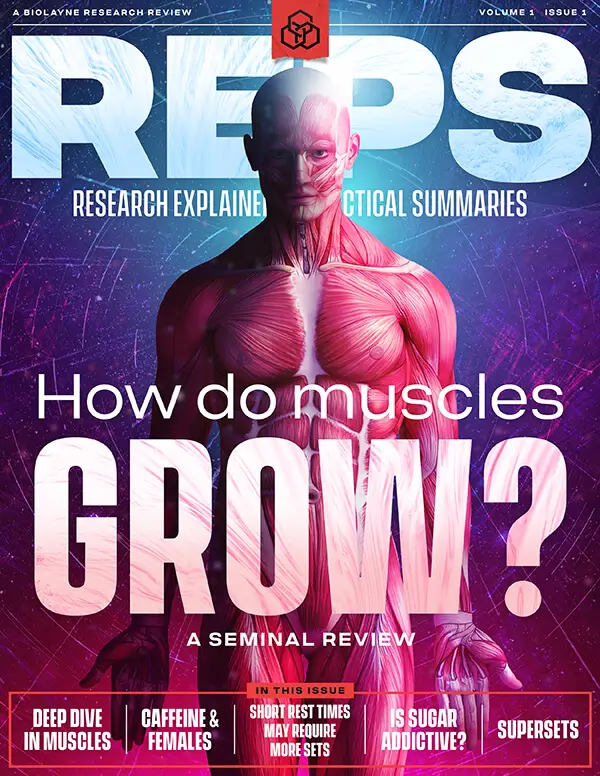Ever wonder how long you should rest in-between sets? In this review we cover a recent study looking at short and long rest intervals and how it impacts strength and muscle growth.
Overview
- What did they test? A short rest interval was compared to a long rest interval to determine how rest duration impacts volume load and changes in strength and muscle growth.
- What did they find? More sets were needed in the short rest interval to achieve similar volume load as the long rest interval. Longer rest intervals achieved greater volume load which lead to greater muscle growth.
- What does it mean for you? If you're resting for short periods between sets, you'll want to consider adding more sets to achieve similar volume load which would theoretically lead to greater muscle growth. If you're trying to be more time efficient, incorporating supersets that target different muscle groups would be better than cutting rest intervals short.
What’s the Problem?
One of the last things people consider for training programs is how long to rest between sets. Training variables like volume and intensity or exercise selection are prioritized over rest intervals. However, rest intervals have a meaningful affect on strength and hypertrophy by directly influencing volume and intensity. Cutting rest times too short can risk decreases in volume and intensity. Textbooks have commonly recommended longer rest intervals (LI) of 2-3 minutes between sets if your primary goal is strength and shorter rest intervals (SI) of 60-90 seconds if your primary goal is muscle growth 2. These rest times have been predicated on adequate recovery in between sets to maintain training intensity for strength-focused programs and shorter rest times to induce metabolite and hormone increases for hypertrophic benefits 3. However, some studies show a benefit on strength 4 5 and hypertrophy 5 6 7 by using LI, while others report no difference for strength 6 7 or hypertrophy 4 when comparing LI and SI. Like any topic in exercise science, conflicting findings are attributed to the widely different study designs.

Volume load (VL) is a useful and important measure for gauging the amount of work per exercise, training session or training block. VL is calculated as the number of sets x reps x weight on the bar for a particular exercise. VL has been shown to be closely associated with increases in hypertrophy 2 8 9. Studies that report a hypertrophic benefit for LI could have achieved greater VL by having participants perform reps to failure 5 6 7. Could it be that VL is the determining factor for increases in hypertrophy? Or could the rest interval impact changes in strength and hypertrophy? How important are rest intervals and what's an appropriate length of time if you want to maximize strength and hypertrophy adaptations? The study we review here provides some evidence to help answer these questions.
Purpose
To compare a LI (3 minutes) to a SI (1 minute) with and without equated VL and how it influences strength and hypertrophy changes following a 10-week training program.







